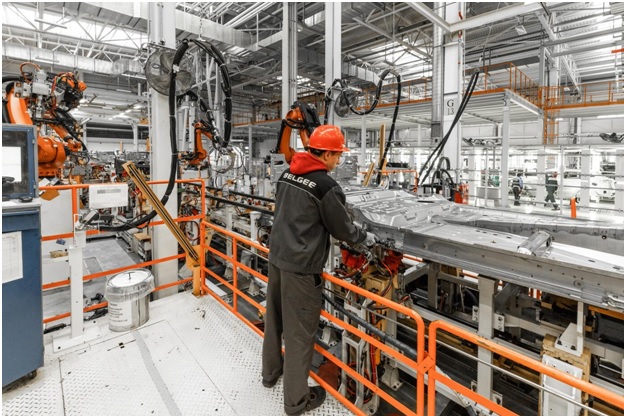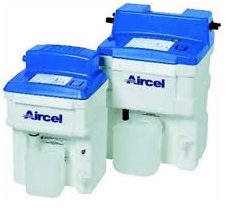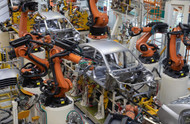The Cost of Neglect: Exploring the Consequences of…
Posted by AVP on Oct 26th 2023
Think about that bustling factory floor, where a symphony of machines work in perfect harmony, and a team of skilled workers orchestrate the production process. It's a scene that defines the world of manufacturing, where it’s all about efficiency.
At the heart of this operation lies the compressed air system, an essential tool that powers a range of applications. Yet, in the midst of this bustling activity, there's a hidden threat—condensate.
Much like an iceberg beneath the surface, it can sink the ship of productivity and cost businesses dearly. Neglecting the proper management of condensate is no different from ignoring the iceberg warning, and the consequences can be equally disastrous.
Understanding Condensate
Condensate, often referred to as the "forgotten fluid," is a byproduct of compressed air systems. When air is compressed, it releases moisture, which then condenses into liquid form. This condensate contains not only water but also traces of oil and other contaminants from the compression process. Neglecting condensate management means disregarding the removal of these impurities.
The Hidden Accumulation: Condensate Buildup
In an industrial setting, the amount of condensate generated can be astonishing. Consider a 500 standard cubic feet per minute (scfm) compressed air system operating under standard conditions.
This system can produce nearly two gallons of liquid condensate per hour. This liquid accumulates at various points within the compressed air system, including the outlet of compressors, accumulator tanks, cyclone separators, coalescing filters, and refrigerated air dryers.
Without proper management, this condensate remains an unnoticed threat, silently accumulating as a time bomb of potential problems.
Condensate’s Impact on Equipment
Neglected condensate can wreak havoc on the components of a compressed air system. It may seem harmless, but this moisture can cause corrosion, rust, and other forms of damage to expensive equipment.
Imagine a steadily rising humidity level within your factory, steadily wearing away at the machines responsible for production.
The result? Frequent breakdowns, reduced operational efficiency, and costly repairs.
The Cost of Contaminants: Product Quality and Defects
In industries where product quality is the most important thing, choosing to be lax in condensate management can be detrimental. Condensate often carries oil and particulate matter, which can compromise the precision of production processes and the quality of finished goods.
Picture a manufacturer producing high-precision components for critical applications. Neglected condensate, with its contaminants, can lead to costly defects, product recalls, and, worst of all, a tarnished reputation.
The Legal Consequences
In certain industries, compliance with safety and quality standards is non-negotiable. When oil is present in condensate, as with oil-lubricated compressors, it must be purified to meet legal levels of residual oil content before discharge into public water treatment systems.
Typically, condensate contains around 5% oil, far exceeding legal limits. Ignoring this aspect of condensate management can result in hefty fines and legal consequences.

The Environmental Impact: Ecosystem and Responsibility
The consequences of inadequate condensate management extend beyond the factory walls. Unchecked condensate often finds its way into the environment, affecting local ecosystems and water sources.
Neglected condensate, laden with contaminants, flows into rivers, lakes, and other natural habitats, jeopardizing aquatic life and ecosystems. Such actions not only harm the environment but also undermine corporate social responsibility efforts.
The Silent Costs: Energy Consumption and Efficiency
Energy is a precious resource, and its wastage has a significant financial impact. Inefficient condensate management can lead to increased energy consumption.
Think of it as leaving the lights on in empty rooms—energy is consumed unnecessarily. Unmanaged condensate can reduce the efficiency of compressed air dryers, causing them to work harder and consume more energy to achieve the same results. This results in higher operational costs and a heavier burden on your company's bottom line.
The Financial Toll: Repair and Replacement
Like an ignored leak in your home, unmanaged condensate issues only worsen over time. Neglecting the maintenance of compressed air systems can lead to costly repairs and equipment replacements. Think about the financial strain of repeatedly fixing or replacing machines that could have been safeguarded through proper condensate management.
The Human Factor: Employee Morale and Safety
Lastly, consider the well-being of your employees. An environment plagued by frequent breakdowns and equipment failures can lead to reduced morale and increased safety risks.
Picture a factory floor where workers constantly deal with malfunctioning machinery due to poor condensate management. It's a recipe for frustration and, more importantly, safety hazards.
The Role of Oil-Water Separators in Effective Condensate Management
Oil-water separators, like the Aircel DS Oil/Water Separators, are indispensable tools in ensuring efficient condensate management within compressed air systems. These separators play a vital role in reducing the oil content in condensate to acceptable levels before it is discharged into the environment or public water treatment systems.

Here's how they work and why they are essential:
- Gravity-Based Separation: Oil-water separators utilize gravity to separate oil and water mixtures effectively. The process begins when liquid condensate and compressed air enter the separator's pressure relief chamber.
- Coalescing and Separation: Inside the separator, a foam coalescing pad captures tiny condensate droplets entrained in the expanding and exhausted air stream. Liquid condensate then enters a pre-sedimentation chamber, where solid particles are separated and captured.
- Oil-Water Separation: Condensate flows through a coalescing foam block, initiating the oil-water separation process. It fills the primary settling chamber, where gravity causes the separation of liquid oil and water.
- Oil Removal: Separated oil is efficiently skimmed from the surface of the settling chamber through an adjustable oil drain tray. This collected oil is stored for proper disposal.
- Water Purification: Separated water, now significantly free from oil, is drawn from the bottom of the settling chamber for final purification. It flows through a pre-adsorber that captures any remaining traces of oil, protecting the subsequent carbon adsorption chambers.
- Activated Carbon Filtration: Activated carbon chambers remove oil to a residual level of 20 ppm or lower. Depending on the separator's size, one or two carbon adsorption chambers may be present.
- Purified Water Output: Finally, the purified water is drawn from the bottom of the carbon adsorption chamber and is either safely discharged or further treated, depending on specific requirements.
Aircel DS Oil-Water Separators are designed to meet or exceed these discharge levels as efficiently and economically as possible. They come in various models to suit different compressed air system capacities, ensuring that condensate is effectively treated, and environmental regulations are met.
Be Proactive In Your Condensate Management
The message is clear: the cost of neglecting proper condensate management in industrial settings is far too high. It's a discordant tune that disrupts the harmony of your operations, affecting equipment, product quality, the environment, and your bottom line.
By ensuring the efficient removal of contaminants using oil-water separators, and safeguarding your compressed air system, you can prevent the costly consequences of neglect and enjoy the harmonious sound of productivity, efficiency, and environmental responsibility.
For oil water separator options, make sure to check out our store here at Air & Vacuum Process, to see just how the Aircel DS Oil/Water Separator can assist and support you and your business.
